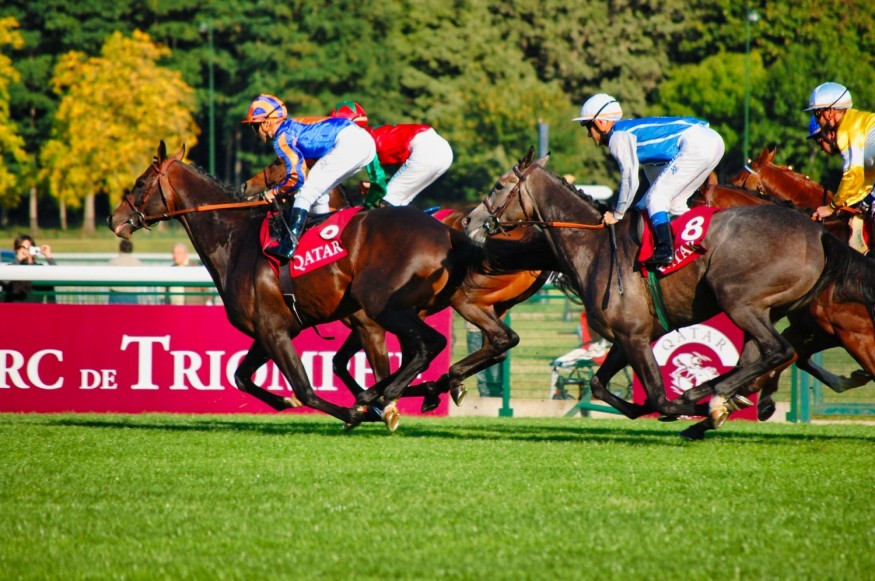Breeding stallions and mares have proven to be one of the most fruitful endeavors for some equine enthusiasts. Even focusing on one of the 5 most expensive horse breeds in the world can give a breeder more than a lifetime's worth of sustenance.
Historically, Thoroughbred breeding activity in North America has been dominated by Kentucky. 200 reported stallions from Kentucky covered 16,727 mares in 2021, or 60.1% of all mares reported bred in North America.
When compared to the 16,391 mares reported at this time last year, the count of mares bred to Kentucky steeds increased by 2%.

Of the top 10 states and provinces by the number of mares reported bred in 2021, stallions in areas including Kentucky, California, Ontario, and Indiana have covered more mares in 2021 as compared to the recorded count of 2020. The data was reported at this same time last year, according to Paulick Report.
Some of the priciest horses ever sold at auction for tens of millions of dollars. The most expensive horse ever sold, Fusaichi Pegasus, was a thoroughbred that cost $70 million. Justify was the second most expensive equine in 2015, selling for $60 million.
Of the top 5 in the world, there are still 3 more of the most expensive horse breed that would still fetch a hefty sum. Here they are:
5th Place: Palloubet d'Halong
Palloubet d'Halong was purchased by Jan Tops, owner of an elite showjumping team and international riding school, for $15 million. He is a gelding Selle Francais at 10 years of age.
Jan Tops participated in four Olympics and captured the gold medal in the 1992 team jumping competition. Edwina Alexander, his wife who is an Australian rider, received Palloubet d'Halong from him.
Janika Sprunger, a Swiss rider, created and sold Palloubet d'Halong. They were successful in their Grand Prix competition. Due to his rapid ascent in the world of jumping and his still-relatively-young age, many buyers were prepared to pay top dollar for this gelding.
4th Place: The Green Monkey
When he was only a two-year-old colt, The Green Monkey was priced at and sold for 16 million dollars, making him an overnight sensation.
Expectations for his racing career were high because he was a relative of both Secretariat and Northern Dancer. But that never happened; he retired without ever winning a race two years after being bought, and he passed away in 2018 from complications brought on by laminitis.
3rd Place: Shareef Dancer
Shareef Dancer was sold at the hefty price of $40 million in 1983. He competed in racing in the UK and took home three of his five victories, including the Irish Derby Stakes, a Group I race.
A combination of factors made Shareef Dancer expensive. Horse racing was thriving at the time, and Shareef Dancer was a lightning-fast stallion with an impeccable bloodline. This stud was also descended from Northern Dancer, who is one of the most successful studs.
2nd Place: Justify
A thoroughbred racehorse by the name of Justify was worth an astounding $75 million in 2018. A chestnut-colored son of Scatcat, Justify. At Keeneland's September yearling sale, he cost $500,000 to buy.
He started racing at the age of three and went undefeated in six races before winning the Triple Crown in 2018-the Kentucky Derby, Preakness Stakes, and Belmont Stakes.
He was just the thirteenth horse in recorded history to accomplish this feat, and his racing victories greatly increased his value. In addition to his $15 million in winnings, his breeding rights have been sold to Coolmore for a whopping $60 million, making him worth $75 million.
Also read : Rare Endangered Malayan Tapir Calf Born in Chester Zoo, a Valuable New Addition to UK Breeding Program
1st Place: Fusaichi Pegasus
In 2000, he ended up winning the Kentucky Derby. He was sold to a syndicate after he stopped racing for a record-breaking $60 million, which is equivalent to $104 million today- which puts him in first place on this list.
He not only had a stellar racing record, but he was also a respected stud. Seventy-five stake races were won by his progeny. He became the most expensive racehorse in history thanks to the high demand for his breeding services, which also increased his value, Horse Racing Sense reports.
Breeding a Winner
The goal in the reining world, like it is for thoroughbred horses, is to produce as many offspring from a winning stallion during his first three years, when they have not yet proven themselves in competition.
According to New York Times, investing in horses carries a plethora of risks. A few foals are stillborn, some colts and fillies may break their legs, and occasionally, horses that command high prices due to their exceptional promise are unable to run or struggle during competition.
There are also times that the horse that makes it through a great competitive career can have complications, which include problems in performance for stallions, and mares can die giving birth.
© 2025 NatureWorldNews.com All rights reserved. Do not reproduce without permission.





